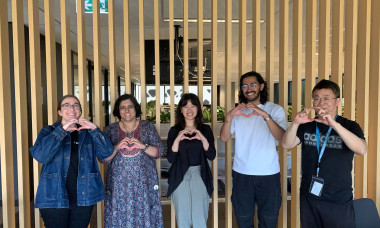Frustration to freedom with three student management fundamentals
Student management used to be a pain for those in education and training administration.
With mountains of paper forms and student records combined with clunky systems that seemed more trouble than they were worth for those inputting and managing education data, educators needed to put a lot of work in to manage the student journey from enrolment to graduation.
Times have changed. While many providers are still yet to fully optimise their processes and use of student management technology (through features like automations) advances have streamlined and digitised processes and interactions right along the learning pathway.
Work in education and training has been moving steadily from frustration to freedom.
The changing face of student management
Student Management Systems have played a big role in this change. When ReadyTech’s cloud system JR Plus was launched in VET over 10 years ago, for example, we identified an opportunity to differentiate in areas being underinvested in by other tech providers.
While good systems did exist, they definitely weren’t great. While they could fulfil functional requirements like compliance in most cases, they lacked the ability to think in terms of human experience, both on the side of the user and administrator, and on the side of the student.
There were three opportunities to capitalise on in particular. And while the game has shifted, these three foundations remain the same. First was a shift towards student-centricity. Second, towards visualisation and visual experience. Thirdly, was the centralisation of data and action.
1. Student centricity
Student centricity comes first because it should be the guiding principle for technology design in education. Students are our customers, and the biggest subset of our users. The experience students have within and through our technology can define their broader experience.
Student Management System design has supported this crucial relationship my incorporating more and more personalisation. With more capacity to configure a system in ways that tailor it to the end user, students were finally being treated like the individuals they actually are.
Utilising elements like colours, layouts, dashboards and filters, education providers could make a system more useful and personal whenever a student interacted with it, most obviously in the growing power of the student portal. Students were welcomed with a new experience.
2. Visualisation
Student Management Systems in the past weren’t great to look at. In fact, they were bordering on ugly. While the B2C world was moving ahead to make systems more attractive and engaging from a user interface perspective, the SMS universe found itself stuck somewhat in the past.
Visualisation changed this for the better. By making systems more appealing to look at and to use, even with basic additions like colours, some student management providers were able to deliver a more professional UI into the vocational education and broader education market.
This has made information more accessible and engaged critical users. Through attractive visuals like dashboards and charts, users on the frontline are now able to more easily view, digest, and utilise information within their workflow, vastly improving provider operations.
3. Centralisation
Centralisation has been a core Student Management System promise from day one. As the home for student information along the student journey, having one place from which to access information and conduct essentials like reporting has always been a mission-critical function.
However, leading systems like JR Plus have managed to go from passive to active with centralisation, through innovations like the Mass Action Centre, that allowed the system to perform actions in bulk across student cohorts, empowering efficiency for administrators.
What had been frustrating, difficult work in managing things like communications with large numbers of students transformed into simple, bulk actions, all managed from a single place. Being a single source of truth made it a single source of freedom for providers.
Freedom and the future
Student Management Systems continue to push the boundaries. For example, JR Plus has opened itself up to an ecosystem of EdTech providers via API, which will enable more value to be delivered along the student journey than any one system could ever deliver.
However these three fundamentals remain the same. Through putting the student at the centre, making the UI and UE intuitive, and unlocking the power of centralisation, Student Management Systems continue to increase in impact for providers large and small.
Interested in learning more about how we help providers with next generation enterprise student management technology? Learn more here.






